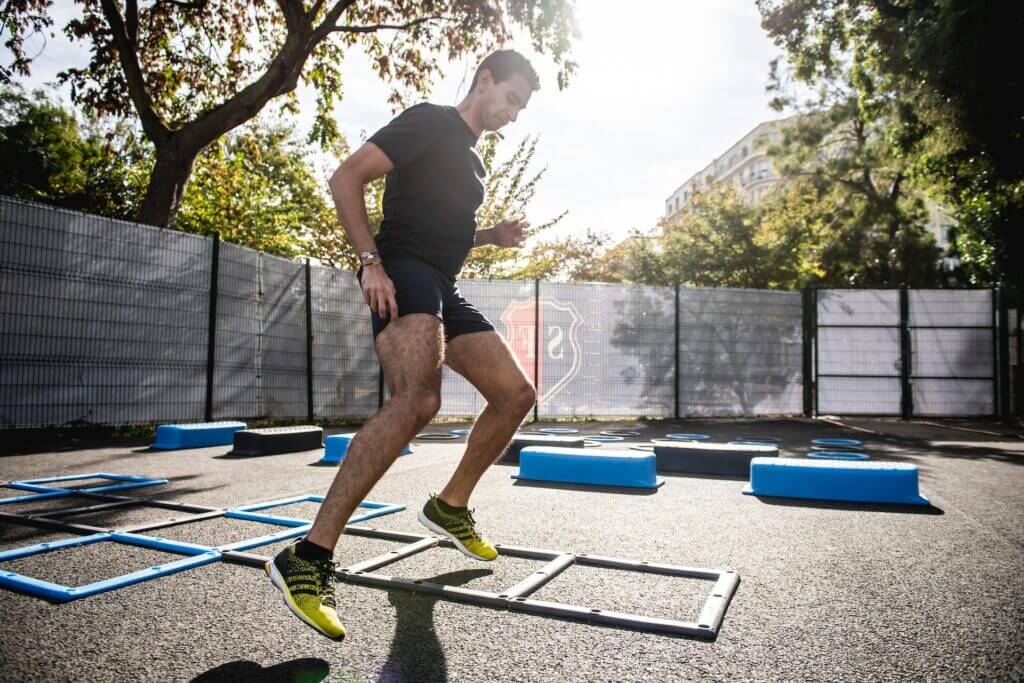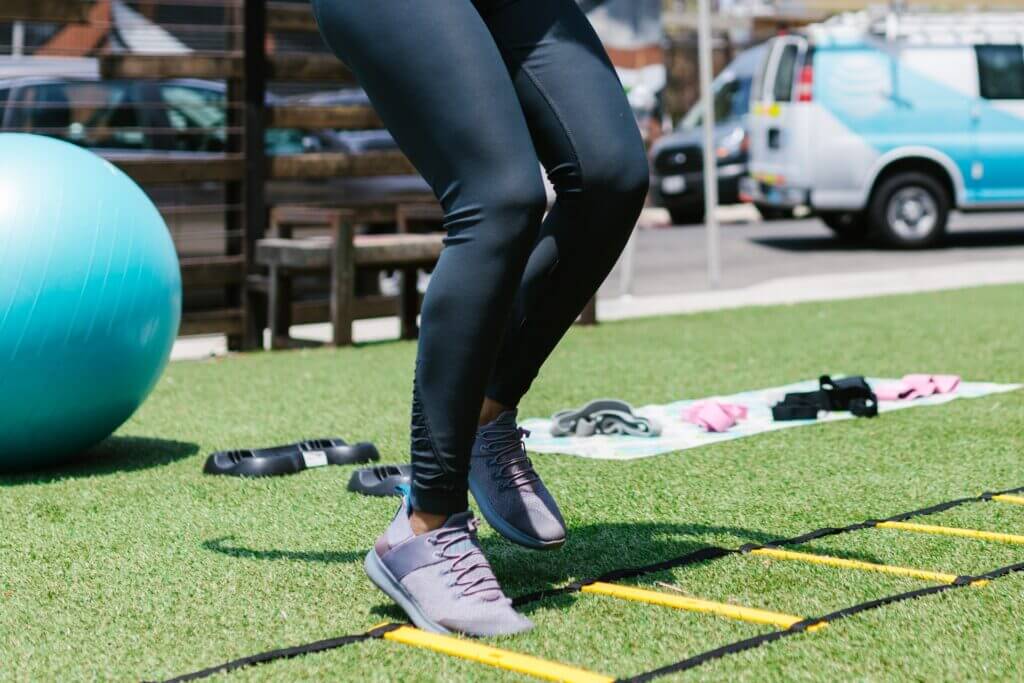As a runner, you’re probably always looking for ways to improve your performance and take your training to the next level. One key factor that can make a big difference in your running technique and efficiency is your cadence – the number of steps you take per minute while running.
Research has shown that a higher cadence can lead to reduced risk of injury, increased speed and endurance, and improved running technique overall. Luckily, there are a variety of running cadence drills you can incorporate into your training to help improve your cadence and take your running performance to new heights.
In this article, we’ll be sharing 5 effective running cadence drills that you can add to your routine to help improve your technique, efficiency, and overall performance.
Table of Contents
The Benefits of Running Cadence Drills

The benefits of running cadence drills are numerous, and they can help runners of all levels improve their performance. Here are some of the key benefits of incorporating running cadence drills into your training routine:
- Improved running technique and efficiency
Running cadence drills are designed to promote proper running form and technique, which can improve your running efficiency. By practicing these drills, you’ll develop a more efficient stride and better running posture, allowing you to run with less effort and expend less energy.
This improved efficiency can translate into faster running times and greater endurance, enabling you to run longer and farther without feeling as fatigued.
- Reduced risk of injury
Running with a proper cadence can reduce the impact on your joints and muscles, lowering your risk of injury. By practicing running cadence drills, you can improve your form and reduce the likelihood of developing common running injuries such as shin splints, IT band syndrome, and plantar fasciitis.
With fewer injuries, you’ll be able to train consistently and achieve your running goals more easily.
- Increased speed and endurance
By improving your running efficiency and reducing your risk of injury, running cadence drills can help you build speed and endurance.
By practicing these drills, you’ll develop the muscle memory necessary to maintain a consistent cadence, enabling you to run faster and farther without experiencing as much fatigue.
With increased speed and endurance, you’ll be able to achieve new personal bests and tackle longer distances.
Overall, running cadence drills are a great way to improve your running technique and efficiency, reduce your risk of injury, and increase your speed and endurance. Incorporating these drills into your training routine can help take your running performance to the next level.
The Science Behind Running Cadence Drills

To understand how running cadence drills work and why they are effective, it’s important to understand the ideal running cadence range and the relationship between running cadence and stride length.
The ideal running cadence range is between 170 and 190 steps per minute (spm). This range is the most efficient cadence for running, meaning that it requires the least amount of energy for a given pace. However, many runners naturally have a lower cadence, which can lead to overstriding and an increased risk of injury.
Overstriding occurs when a runner’s foot lands too far in front of their center of mass, causing a braking effect that can slow them down and put excessive strain on their muscles and joints. Increasing running cadence can help prevent overstriding by shortening stride length and promoting a more efficient running form.
Running cadence drills can help improve running cadence by training the neuromuscular system to move at a faster pace. By practicing running cadence drills, runners can increase their stride turnover rate and improve their running efficiency.
Some common running cadence drills include metronome training, fast feet, stride shortening, skipping, and hill repeats. These drills can be incorporated into a runner’s regular training routine to improve their running form and performance.
In addition to improving running efficiency, increasing running cadence has also been found to increase running speed and endurance. A study published in the Journal of Strength and Conditioning Research found that runners who increased their cadence by 10% were able to run faster and with less perceived exertion than those who did not.
Overall, the science behind running cadence drills supports their effectiveness in improving running form, reducing injury risk, and increasing running performance. By incorporating running cadence drills into your regular training routine, you can become a more efficient and faster runner.
5 Effective Running Cadence Drills
Now that we’ve discussed the benefits of running cadence drills, let’s dive into five effective drills you can use to improve your cadence:
1. Fast Feet Drills
The Fast Feet drill is a simple yet effective running cadence drill that can help you improve your foot turnover and increase your running speed. This drill involves rapid movement of your feet while keeping your upper body relaxed.
To perform the Fast Feet drill, start by standing in place and rapidly moving your feet up and down as quickly as possible while keeping your upper body relaxed. Your feet should stay close to the ground and your knees should be slightly bent.
Focus on keeping your feet moving quickly and maintaining a consistent rhythm. Start with shorter intervals of 10-15 seconds and gradually increase the duration and speed of the drill as you become more comfortable.
The Fast Feet drill can be done as a warm-up exercise before a run or as a standalone drill during a training session. It’s a great way to improve your foot speed, coordination, and running technique.
By incorporating the Fast Feet drill into your training routine, you can improve your running cadence and efficiency, which can lead to better performance and reduced risk of injury. Remember to start with a comfortable pace and gradually increase the intensity and duration of the drill as you become more comfortable. Additionally, it’s important to maintain good form and posture throughout the drill to get the most out of it.
2. Skipping Drill
The skipping drill is an effective way to improve your running cadence and coordination. It is a plyometric exercise that can help you develop explosive power, agility, and balance. The drill involves alternating between skipping with each leg while focusing on maintaining a consistent rhythm.
To perform the skipping drill, start by standing up straight with your arms relaxed at your sides. Begin skipping in place by hopping lightly on the ball of one foot and then quickly switching to the other foot. As you alternate between each foot, make sure you maintain a steady rhythm and keep your movements fluid and relaxed.
To increase the intensity of the drill, you can gradually increase the speed and height of your skips. You can also try incorporating different skipping variations, such as high knees, single-leg skips, or double unders, to challenge yourself and improve your overall coordination.
The skipping drill can help you improve your running cadence by developing the fast-twitch muscle fibers in your legs, which are responsible for quick, explosive movements. Additionally, the drill can help you develop better balance and stability, which can improve your overall running form and reduce your risk of injury.
To incorporate the skipping drill into your training routine, try adding it to your warm-up or cooldown routine or as part of a plyometric circuit. Aim to perform the drill for 30-60 seconds at a time, gradually increasing the duration and intensity as you become more comfortable. Remember to focus on maintaining a consistent rhythm and keeping your movements relaxed and fluid.
3. Hill Repeat Drill
Hill repeats are a popular running cadence drill that can help improve your strength, endurance, and running efficiency. This drill involves running up a hill at a steady pace while maintaining a quick cadence. Once you reach the top of the hill, you walk or jog back down to the bottom and repeat the drill for several repetitions.
There are many benefits to incorporating hill repeats into your training routine. First, running uphill helps build strength in your leg muscles, which can improve your overall running performance. Hill repeats also provide an opportunity to work on your running form and cadence, as it can be more challenging to maintain a quick cadence while running uphill. Additionally, running uphill can help improve your cardiovascular endurance, allowing you to run faster and longer.
To perform hill repeats, find a hill with a moderate incline and a distance that you can comfortably run up and down. Start by jogging slowly up the hill, focusing on maintaining a steady cadence and good form.
Once you reach the top of the hill, walk or jog back down to the bottom and repeat the drill for several repetitions. It’s important to start with a comfortable pace and gradually increase the intensity and duration of each repetition as you become more comfortable.
While hill repeats can be a challenging drill, they can also be a fun and rewarding addition to your training routine. Remember to stay focused on maintaining good form and cadence, and don’t be afraid to challenge yourself by finding steeper hills or increasing the number of repetitions. As always, it’s important to consult with a coach or trainer to ensure that you are performing each drill correctly and safely.
4. High Knees Drill
The High Knees drill is a popular drill that helps improve running cadence and power. This drill focuses on lifting the knees high while maintaining a quick cadence, which can help improve running form and increase stride length.
To perform the High Knees drill, stand tall with your feet hip-width apart and your arms at your sides. Begin jogging in place, gradually increasing the speed until you are running in place. As you run, focus on lifting your knees as high as possible while keeping your upper body relaxed.
To add intensity to the drill, you can place cones or markers on the ground and aim to lift your knees over them. You can also try performing the drill on an incline to increase the challenge and build leg strength.
When performing the High Knees drill, it’s important to maintain good form and avoid leaning forward or hunching your shoulders. Keep your gaze forward and your core engaged to maintain stability and proper alignment.
Incorporating the High Knees drill into your training routine can help improve your running performance by increasing your running power and cadence. Start with a few repetitions and gradually increase the intensity and duration of the drill as you become more comfortable.
5. Butt Kicks Drill
The Butt Kicks Drill is an effective running cadence drill that can help improve your lower body strength, flexibility, and running technique. It’s also a great way to warm up before a run or workout.
To perform this drill, start by jogging at a comfortable pace. As you jog, bring your heels up towards your glutes, kicking your butt with each step. Focus on keeping your upper body upright and relaxed, while engaging your core and lower body muscles.
It’s important to maintain a quick cadence and avoid over-striding while performing this drill. Aim for a smooth and efficient motion, with a slight forward lean from the ankles.
The Butt Kicks Drill can help improve your running mechanics by promoting a quick and efficient stride, while also strengthening your hip flexors and improving your range of motion. This can ultimately lead to improved running performance and reduced risk of injury.
To get the most benefit from this drill, incorporate it into your warm-up routine before a run or workout. Start with a few repetitions and gradually increase the duration and intensity as you become more comfortable. As with all running cadence drills, it’s important to maintain proper form and technique to avoid injury and maximize your results.
Conclusion
In conclusion, running cadence drills are an effective way to improve your running performance. By focusing on increasing your cadence and improving your technique, you can run faster, longer, and with less risk of injury.
Through this article, we’ve covered the benefits of running cadence drills and the science behind how they work. We’ve also provided you with five effective running cadence drills that you can incorporate into your training routine.
Remember, incorporating running cadence drills into your training routine is a process that takes time and practice. Don’t get discouraged if you don’t see immediate results. Be patient and consistent, and you will eventually see improvements in your running performance.
So, whether you’re a beginner or an experienced runner, give these running cadence drills a try and see how they can help you improve your running technique and take your performance to the next level!


